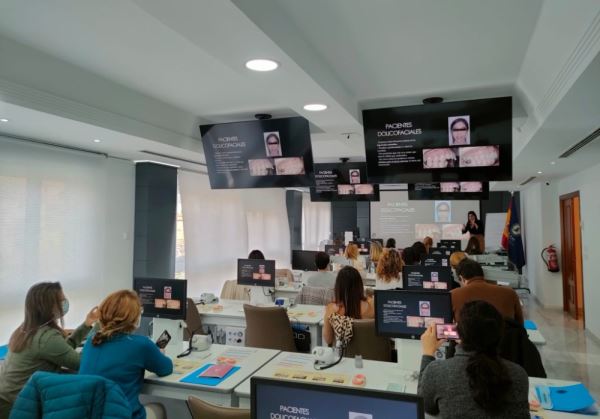Our Blog
Update on pulp treatment in pediatric dentistry and functional orthodontics. Austro Repositioner
The course entitled: "Update on pulp treatment in pediatric dentistry and functional orthodontics. Austro Repositioner", which had a theoretical part and a practical workshop, had the following program:
1. UPDATE IN PULP TREATMENT IN PRIMARY DENTITION AND YOUNG PERMANENT DENTITION Current techniques and materials for successful pulpotomy (MTA, Biodentine, NeoMTA, Neoputty.....)
Current techniques and materials for the successful performance of a pulpectomy (manual, rotary technique...) Update on pulp treatments in young permanent dentition. Carving and placement of preformed steel crowns on primary teeth (3M, NuSmile...) and zirconium (NuSmile, Kinder...)
2. UPDATE IN THE TREATMENT OF SKELETAL CLASS II TREATMENTS WITH HYPOPLASIA AND MANDIBULAR RETROGNATISM WITH FUNCTIONAL APPLIANCES: USE OF THE AUSTRIAN REPOSITIONER IN DOLIC AND BRACHYFACIAL PATIENTS
Know how maxillary and mandibular growth occurs. Relationship between facial growth, function and development of malocclusions. Age of choice for Class II treatment. Advantages and disadvantages of Twin-block, Herbst....
Use of the Austro Repositioner in patients with skeletal Class II and brachyfacial mandibular hypoplasia.
Use of the Austro Repositioner in patients with skeletal Class II and mandibular dolicofacilal hypoplasia.
PRACTICAL PROGRAM
Performance of pulpotomy in a primary tooth.
In mixed dentition models, clinical procedures will be performed for carving and placement of preformed steel crowns in primary dentition.
Clinical procedures will be carried out for the carving and placement of Zirconium crowns for primary teeth.
Learn how to use and place the Austro Repositioner.
Clinical cases of the Austro Repositioner.
At the end, Dr. Austro received from the President of the Scientific Commission , Dr. Ocampo, a gift on behalf of the College in gratitude for their participation in this training activity.

